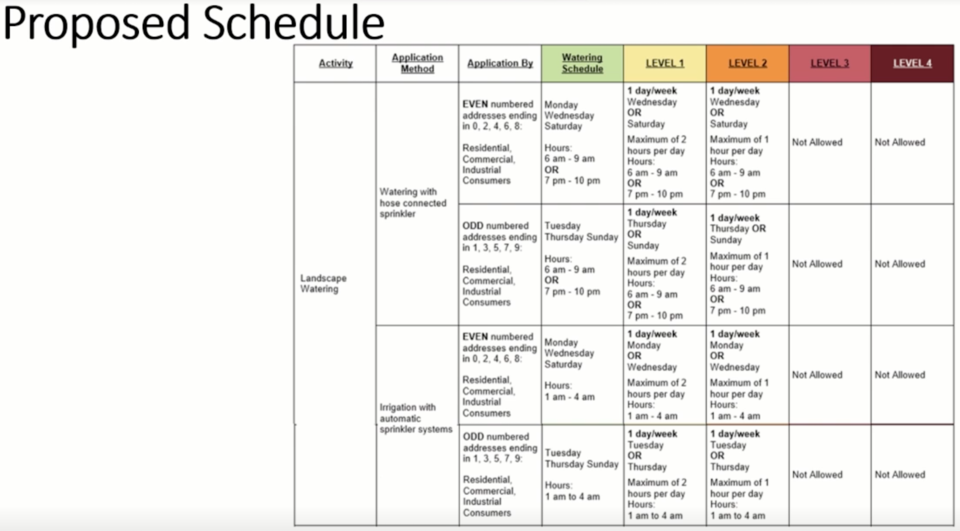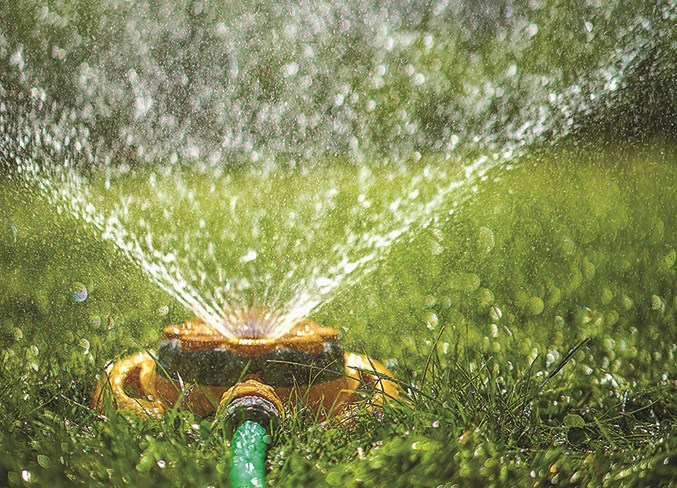Members of Airdrie’s council addressed water conservation plans and bylaws during their first Community Infrastructure and Strategic Growth Standing Committee meeting on April 9.
The City presented an updated Water Conservation, Efficiency, and Productivity (CEP) Plan to address emerging challenges and regulatory changes.
The new plan establishes new targets in terms of residential Litres per Capita per Day (LCD), including a 20 per cent reduction in the residential portion of the City’s LCD from 250 to 200 by 2038.
“Based on our internal conversations that we’ve had when we were establishing these targets, we do feel that a 20 per cent reduction is achievable,” said Eugene Lund, Airdrie’s manager of utility operations. “That’s primarily through mechanisms that we as a City can control through our departments and internal processes.”
What’s different about this target compared to past targets is that it focuses on the residential component, excluding industrial, commercial, and institutional users.
Water conservation efforts are implemented across Airdrie's departments and Coun. Al Jones questioned how the City plans to maintain trees and plants during a drought. He suggested mitigating the use of any potable water by using water from Airdrie’s many storm ponds.
Lund said it won't come directly from storm ponds but will be a combination of different sources including stormwater capture as well as from the potable water bulk station.
The new CEP plan includes a new water audit tool to better understand the volume of unaccounted for water leaving the system. This allows the City to continue to work towards achieving the target of 10 per cent unaccounted for water loss, based on total water usage.
“A water loss could be a water leak or something like that but unaccounted for water can be water that is being used and not being metered,” Lund said, adding this may be a result of lines being flushed or being pressure tested during construction.
Several new tools and practices are put in place including the AHS "Guidelines on Stormwater Use," the Alberta Environment stormwater use amendment, and large water use audits for homeowners who use over 40m3.
The original 2019 CEP Plan was meant to promote sustainable practices and work towards a reduction in the City’s overall water consumption.
The City has achieved several conservation milestones, including a drop of LCD consumption by 37 per cent since 2003.
“The 2030 target we had established of achieving a 250 LCD milestone has been consistently met here over the past four years,” Lund said. “We have managed to do this despite the fact that the population overall for the City has continued to increase.”
Three council members, Coun. Tina Petrow, Coun. Heather Spearman, and Jones are voting members for the Community Infrastructure and Strategic Growth Standing Committee. Mayor Peter Brown is an ex-officio voting member of all new committees.
Amendments to Waterworks Bylaw
Administration presented amendments to the Waterworks Bylaw meant to allow for better management of the forecasted drought conditions anticipated in 2024.
Those amendments were approved by council during the April 16 council meeting.
The first amendment revises the Conservation Water Use Schedule from a three-level to a four-level restriction format and adds a watering schedule separate from the four levels of water restrictions.
The first level restricts watering to one day per week for two hours, level two restricts watering to one day per week for one hour, level three restricts watering to hand watering and activities requiring exception permits, while level four prohibits most activities.

The second amendment adds a permits section, allowing the City to grant permits for watering uses during restrictions. And the third amendment modifies the Order to Remedy process to better align with the City’s Community Standards Bylaw, which may include a fine.
The committee made several suggestions, which were acknowledged by council on April 16.
Coun. Candice Kolson asked whether water-based businesses would still be allowed to fill at bulk water stations to keep their business going. Permits will be required at level three, but Lund said only the Province can implement restrictions that would prevent businesses from using water.
Jones requested that watering vegetable gardens be separated from watering lawns, flower beds, and other plants. During the April 16 meeting, Lund said there is no restriction on using alternate water like rain water for gardens.
Additional amendments will be brought forward to the committee in Q3 of this year.
“That will also give us an opportunity to provide an update in terms of how the drought situation has unfolded over the summer and how these proposed restrictions are working up until that point,” Lund said.
Administration has a communication plan to educate the public on what is allowed and what isn’t allowed under the restrictions.
To read more about the amendments, find to the agenda item at Airdrie.ca.



